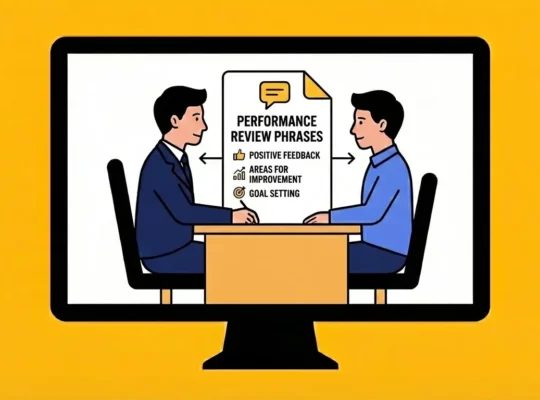Article Summary
Employee advocacy is a powerful tool for enhancing brand visibility, engagement, and business growth. This article explores the importance of employee advocacy, its benefits for organizations and employees, and strategies for implementing a successful program. From building an employee advocacy program to using technology for scalability, the guide offers practical insights for marketing and employer branding managers. You will better understand how to align advocacy efforts with company goals and measure their success using various tools and platforms.
Takeaways
- Employee advocacy enhances brand visibility, employee engagement, and business outcomes.
- Effective advocacy programs involve clear goals, incentives, training, and support.
- Technology and data are crucial for measuring and scaling advocacy efforts.
- Authentic storytelling and personal branding play key roles in successful advocacy.
- Overcoming challenges like low engagement and social media policy concerns is essential.
Table of Contents
- Understanding Employee Advocacy
- Benefits of Employee Advocacy
- How to Encourage Employee Advocacy: Key Strategies
- Best Practices for Building a Successful Employee Advocacy Program
- Overcoming Common Challenges in Employee Advocacy
- Case Studies: Successful Employee Advocacy Programs
- Tools and Platforms to Facilitate Employee Advocacy
Understanding Employee Advocacy
What Is Employee Advocacy?
Employee advocacy refers to actions employees take to promote and support their company’s brand and values. This can manifest in various ways, such as employees sharing positive aspects of their workplace on social media, participating in industry events as company representatives, or using branded merchandise in everyday life. The essence of employee advocacy lies in employees genuinely promoting their organization, creating a sense of authenticity and trust. In recent years, it has become an increasingly crucial strategy for organizations looking to enhance their visibility and build genuine employee engagement.
Types of Employee Advocacy
Employee advocacy takes on many forms. Social media is a popular avenue, where employees post about their workplace experiences, achievements, and company culture on platforms like LinkedIn and Twitter. Others might engage in advocacy by speaking at conferences or attending industry events, sharing their expertise while representing their company. Employees can also appear on podcasts or webinars, offering insights while indirectly promoting their workplace. Internal and external referrals are another method, where employees recommend potential hires, thus supporting the brand’s growth and credibility. These varied forms highlight how adaptable and impactful employee advocacy can be when integrated into a comprehensive employee advocacy program that aligns with workplace culture.
Key Differences Between Employee Advocacy and Traditional Marketing
Employee advocacy stands apart from traditional marketing due to its emphasis on authenticity and relatability. Employees who promote their company serve as organic brand ambassadors, which often makes their messages feel more credible and personal to audiences. Traditional marketing may use polished ads or professional endorsements, but employee advocacy relies on real, unfiltered experiences. This organic nature increases trust, enhancing the impact of employer branding efforts by creating deeper, more meaningful connections with potential candidates and clients.
Benefits of Employee Advocacy
For the Organization
Employee advocacy significantly boosts brand visibility by amplifying a company’s presence online and offline. When employees share content or speak positively about their experiences, they increase the reach and credibility of the brand. It also plays a vital role in enhancing employer branding, making the organization more attractive to potential hires. As employees engage in advocacy, they create a ripple effect, attracting like-minded professionals and top talent who resonate with the company’s mission and culture. Additionally, engaged employees who feel valued as advocates are more likely to stay with the company, which improves retention rates and reduces turnover.
For Employees
From the employees’ perspective, engaging in advocacy offers substantial personal and professional benefits. By participating in advocacy initiatives, employees have the opportunity to build and enhance their personal brands. This visibility can open doors to career growth, as employees who are active online and represent their company positively are often seen as leaders and influencers in their field. Moreover, engaging in these activities increases job satisfaction, as employees feel more connected to their workplace, leading to a deeper sense of purpose and belonging.
For Business Outcomes
A successful employee advocacy program positively impacts business outcomes in measurable ways. Companies with active employee advocates often experience higher profitability due to the organic reach and authentic connections employees establish with clients and potential customers. Furthermore, employee engagement through advocacy contributes to improved business performance, leading to lower absenteeism and turnover rates. When employees are motivated and engaged, they are more likely to perform well, which, in turn, benefits the entire organization by fostering a culture of excellence and productivity.
How to Encourage Employee Advocacy: Key Strategies
Establish an Employee Advocacy Program
The foundation of a successful employee advocacy effort is a well-structured program. Defining clear goals is essential, as it provides direction and purpose for employees who participate. Companies must identify specific objectives, such as increasing brand visibility, boosting employee engagement, or enhancing the employer brand. Creating a platform where employees can easily access resources, like pre-approved social media posts or branded content, is crucial. Platforms such as Hootsuite Amplify and LinkedIn Elevate are useful for streamlining content sharing and tracking employee involvement, making the advocacy process efficient and measurable.
Create Incentives for Participation
Offering incentives can significantly boost participation rates among employees. Companies should consider tangible rewards like gift cards, bonuses, or branded merchandise to recognize the efforts of their advocates. Introducing gamification elements, such as a point-based system where employees earn points for social media engagement, can also motivate employees. Additionally, providing public recognition for top performers, both internally and externally, serves as a powerful motivator. Employees who feel their efforts are appreciated are more likely to engage consistently, helping the advocacy program thrive.
Develop a Content Repository
A centralized content-sharing platform is a valuable resource for any advocacy program. Having a repository filled with approved content like social media posts, videos, infographics, and company news makes it easier for employees to participate without the burden of creating content from scratch. Regularly updating this library ensures that the material remains fresh and relevant, encouraging employees to engage with and share content that resonates with their networks. This system not only simplifies the advocacy process but also guarantees that all communications align with the company’s brand and messaging.
Provide Training and Support
Training is a vital component of a successful employee advocacy program. Employees should be given the tools to build their personal brand while promoting the company. Workshops on effective social media use and storytelling techniques can empower employees to share their experiences in a compelling manner. Additionally, regular sessions on company values and brand messaging are important to ensure consistency and clarity in all communications. Ongoing support from marketing or communication teams can also provide guidance, helping employees feel confident and prepared to advocate for the brand.
Encourage Authentic Storytelling
Authenticity is at the core of successful employee advocacy. Encouraging employees to share their personal experiences and success stories creates a genuine connection between the brand and its audience. Employees can be motivated to highlight company culture, volunteer initiatives, or professional achievements, showcasing the human side of the brand. Platforms like LinkedIn are particularly effective for this type of storytelling, where employees can share meaningful narratives that blend their professional and personal lives, enriching the overall brand story.
Best Practices for Building a Successful Employee Advocacy Program
Align Advocacy Efforts with Company Goals
Aligning employee advocacy with the company’s broader business objectives is essential for maximizing impact. By integrating advocacy goals into the overall corporate branding strategy and social media marketing, companies ensure that efforts are cohesive and support the organization’s mission. Advocacy initiatives should also complement existing corporate culture initiatives, reinforcing key values and enhancing overall company culture.
Use Technology for Measurement and Scalability
Measuring the success of an employee advocacy program is crucial for its growth. Conducting surveys like the Employee Net Promoter Score (eNPS) helps gauge employee satisfaction and identify advocacy levels within the organization. Using technology platforms designed for employee advocacy, such as Hootsuite Amplify, not only aids in content distribution but also provides analytics to measure engagement and participation rates. Tracking these metrics helps companies understand the program’s effectiveness and scale efforts based on data-driven insights.
Monitor and Adapt the Program
A successful advocacy program requires continuous monitoring and adaptation. Companies should collect regular feedback from employees to understand their experience with the program and identify areas for improvement. Tracking key performance indicators, such as social media engagement, content shares, and participation rates, allows companies to gauge success and make necessary adjustments. Adapting strategies based on these insights ensures that the program remains relevant and impactful, aligning with both employee needs and organizational goals.
Overcoming Common Challenges in Employee Advocacy
Lack of Employee Engagement
One of the most common challenges in employee advocacy is a lack of engagement. To overcome this, companies need to demonstrate how advocacy benefits employees personally, such as through career development opportunities or professional visibility. Offering incentives and simplifying the advocacy process through pre-approved content can also help employees feel more inclined to participate. When employees understand the value of their contributions, they are more likely to engage meaningfully.
Fear of Overwhelming Employees with Additional Responsibilities
Another challenge is the fear of overwhelming employees with additional tasks. To address this, companies can streamline advocacy efforts using digital advocacy tools that make sharing content quick and easy. By providing accessible resources and consistent support, companies can ensure that advocacy feels manageable and integrated into employees’ regular activities rather than an additional burden.
Concerns About Consistent Messaging
Maintaining consistent messaging across employee advocacy efforts can be challenging. To ensure uniformity, it is important to provide training sessions focused on company values and brand messaging. This helps employees understand the organization’s goals and feel comfortable representing the brand in a way that aligns with its values. A clear social media policy also sets expectations and guidelines, balancing personal expression with professional responsibilities.
Case Studies: Successful Employee Advocacy Programs
Employee advocacy programs have become an essential strategy for companies aiming to boost brand visibility and employee engagement. Here are some successful examples from various industries, demonstrating how companies leverage their employees as brand advocates:
Microsoft
Microsoft launched a global employee advocacy program using the Sociabble platform, targeting 17,000 employees across 40 countries. The initiative involved tailoring content for different regions while ensuring global consistency. Microsoft’s approach included setting up localized content channels, which allowed employees to access relevant material based on their location and role. The program generated significant reach, with an estimated 350 to 500 million potential impressions per year, equating to an advertising value between $5 to $10 million.
Adobe
Adobe’s “Social Shift” employee advocacy program is another noteworthy example. The initiative trained employees on social media best practices, encouraging them to share stories about Adobe’s products and workplace culture. As a result, Adobe saw a 20% increase in brand awareness and generated 100 million social media impressions. This case highlights the importance of structured training and active engagement from employees to drive successful outcomes.
Genesys
Genesys has integrated employee advocacy into its sales strategy through social selling. By equipping its global sales team with tools and training, Genesys doubled its sales pipeline and increased win rates. This approach demonstrates how employee advocacy can extend beyond marketing, influencing sales and revenue growth directly.
Adecco Group
The Adecco Group utilized Sociabble to manage their employee advocacy program, which enabled their 5,000 employees across 15 brands to easily share content from 45 social media accounts. This centralized approach, combined with social media training, allowed Adecco to enhance both internal and external brand visibility, effectively integrating advocacy into its overall business strategy.
Salesforce
Salesforce’s “#ShareOurSpirit” program has been instrumental in boosting employee engagement by 15%, generating over one billion social media impressions. By encouraging employees to share their workplace experiences and promote products, Salesforce created a vibrant and impactful advocacy program that also strengthens their recruitment and talent acquisition efforts
How to Implement These Case Studies
These case studies highlight the importance of structured programs, proper training, and tailored content strategies. Companies looking to implement or improve their employee advocacy programs should focus on:
- Training and Empowerment: Ensure employees are well-equipped to represent the brand on social media. Training in content creation and personal branding can enhance authenticity and impact.
- Localized and Global Strategies: Use platforms that support both global content distribution and localized engagement, ensuring relevance across regions.
- Measurement and Adaptation: Track metrics like social media impressions and employee engagement rates. Tools like Sociabble and EveryoneSocial can facilitate this and help adapt strategies based on performance
Tools and Platforms to Facilitate Employee Advocacy
Employee Advocacy Platforms
Platforms like Hootsuite Amplify, Sprout Social, and LinkedIn Elevate provide efficient ways to manage and scale employee advocacy efforts. These platforms facilitate content scheduling, analytics tracking, and ease of use, allowing companies to streamline and measure their programs effectively.
Content Management Tools
Centralized tools like SharePoint and Google Drive help manage and distribute approved content efficiently. These platforms ensure that employees have quick access to branded material, simplifying the advocacy process and enabling consistent messaging across various channels.
Survey Tools for Feedback
Platforms like review.jobs help gather insights into employee satisfaction through eNPS scores and surveys. Monitoring these results enables companies to identify program strengths and areas for improvement, ensuring a data-driven approach to scaling employee advocacy initiatives.
FAQs
1. What is employee advocacy?
Employee advocacy refers to employees promoting and supporting their company’s brand, typically through social media and personal interactions.
2. How can a company encourage employee advocacy?
Establishing an advocacy program, providing incentives, and offering training and support are key strategies.
3. What are the benefits of employee advocacy?
Employee advocacy boosts brand visibility, enhances employee engagement, and leads to better business outcomes.
4. How can companies measure the success of their employee advocacy program?
Using tools like eNPS surveys and tracking social media engagement metrics are effective ways to measure success.





